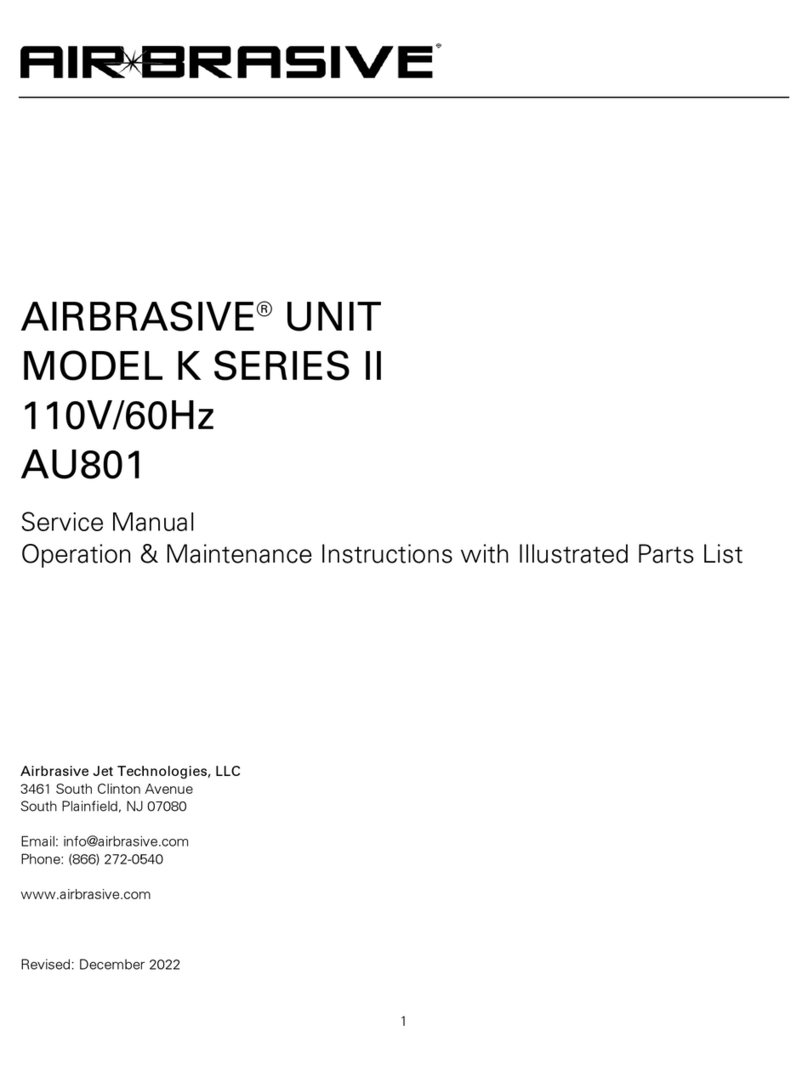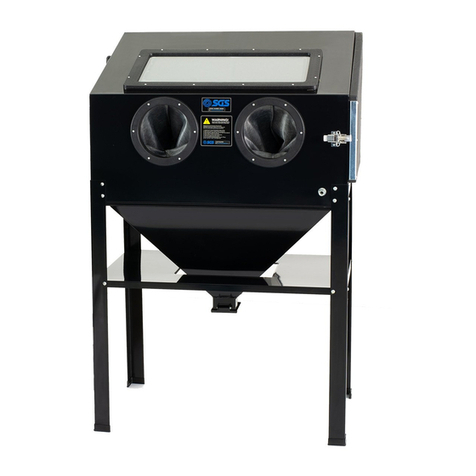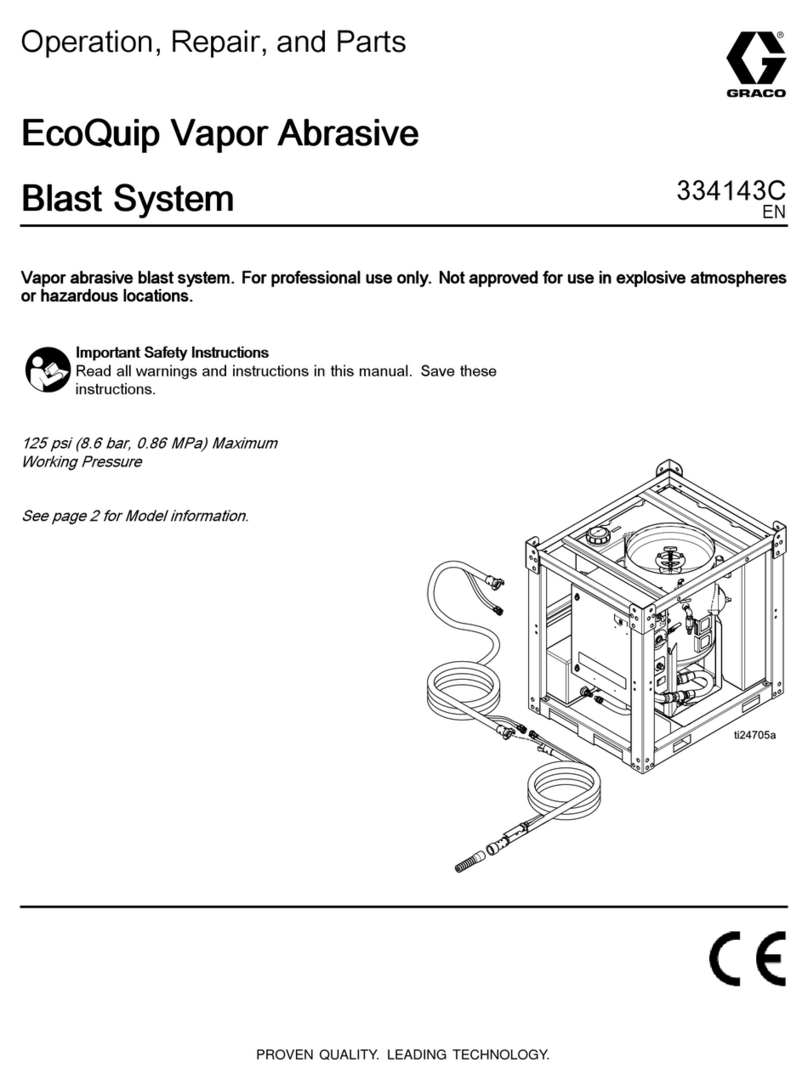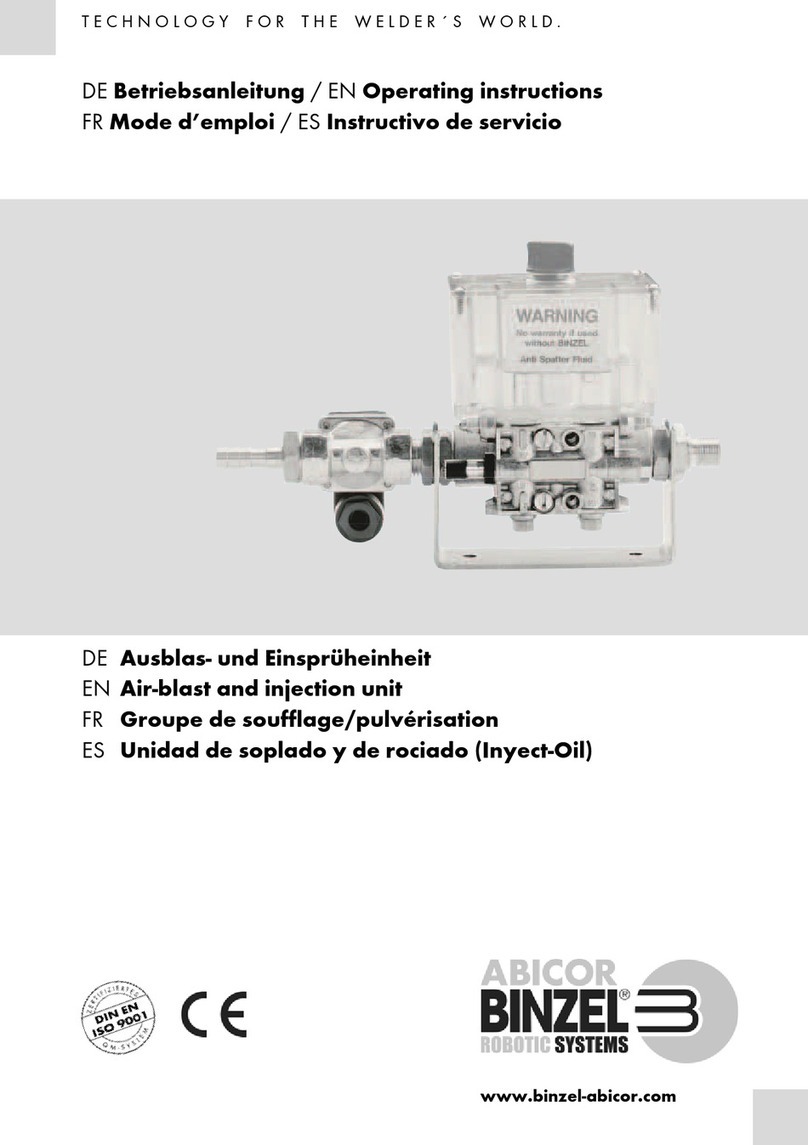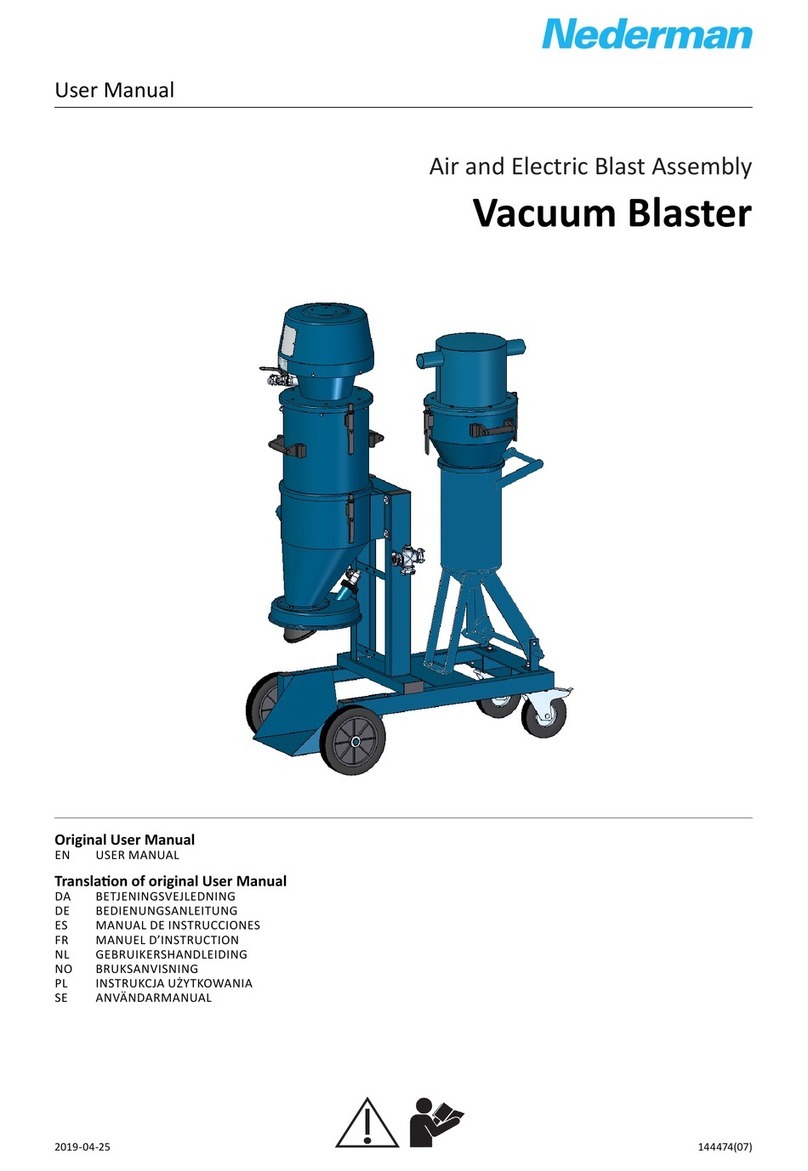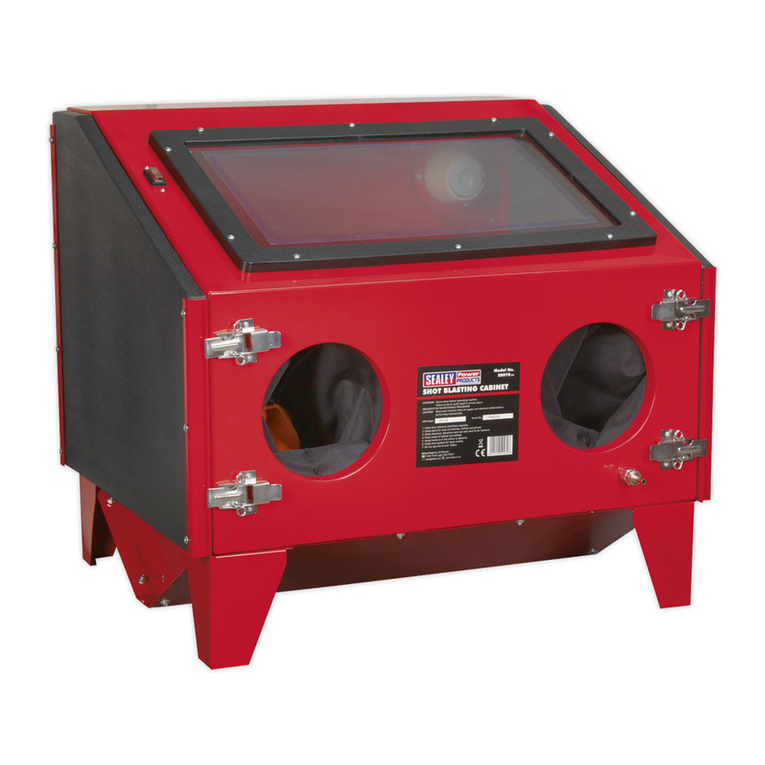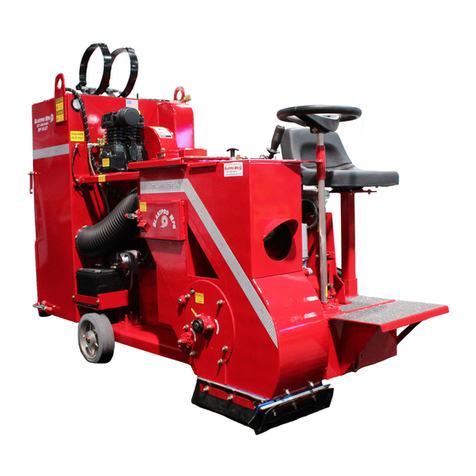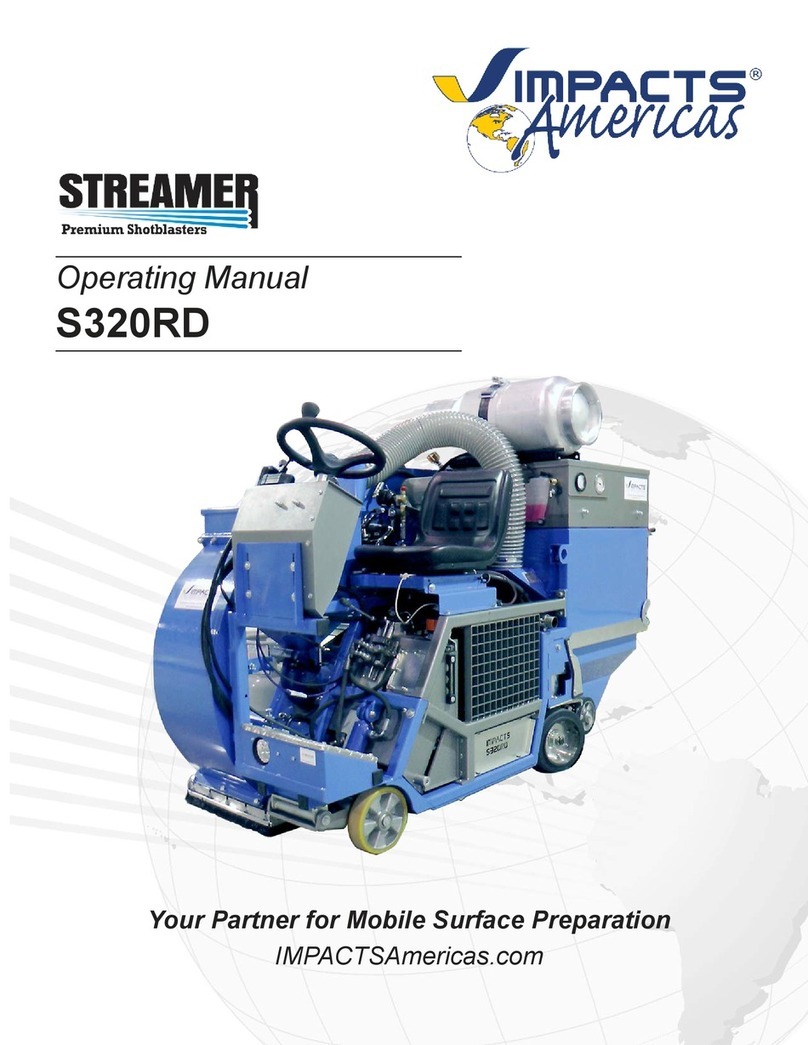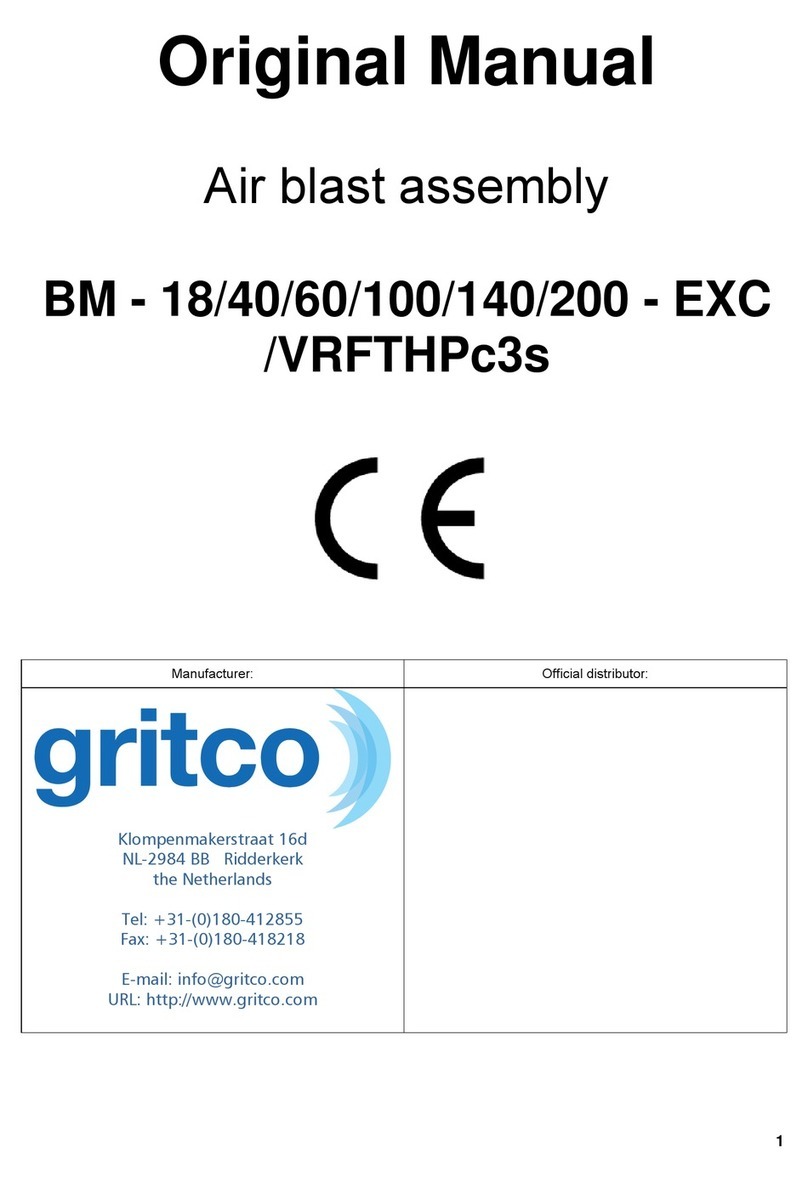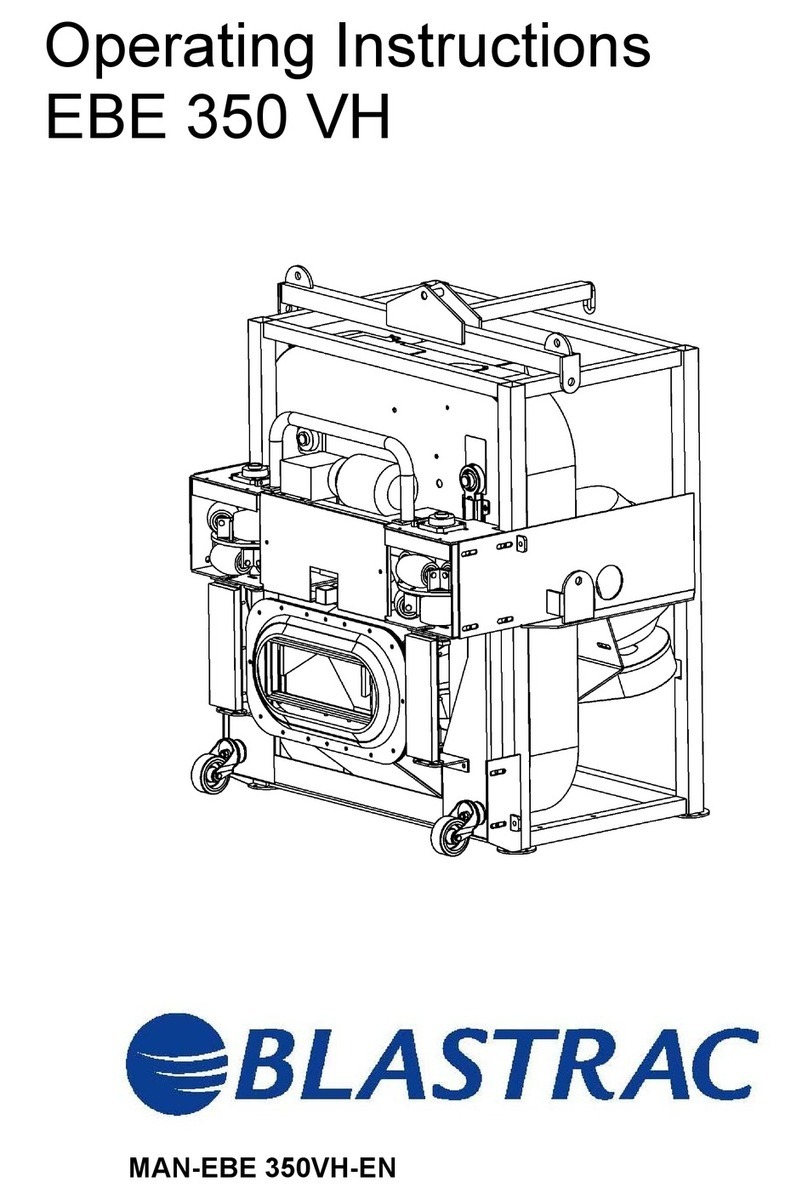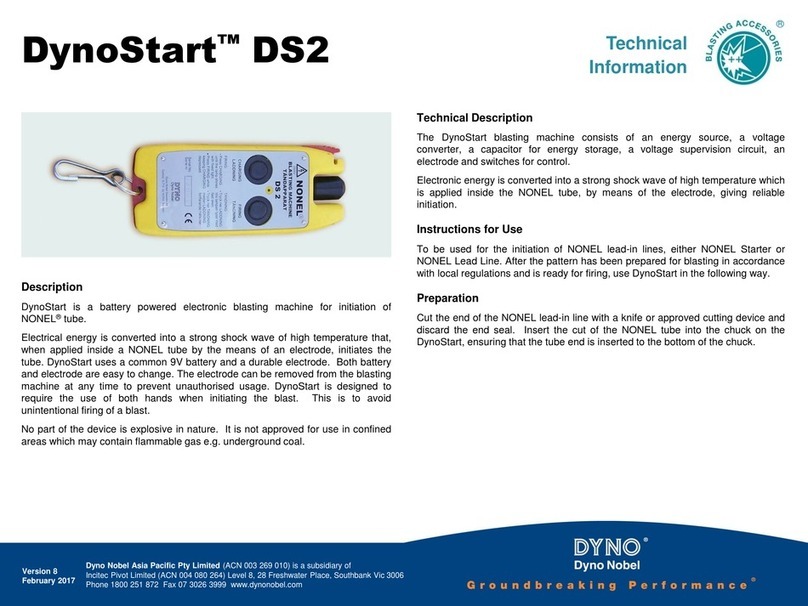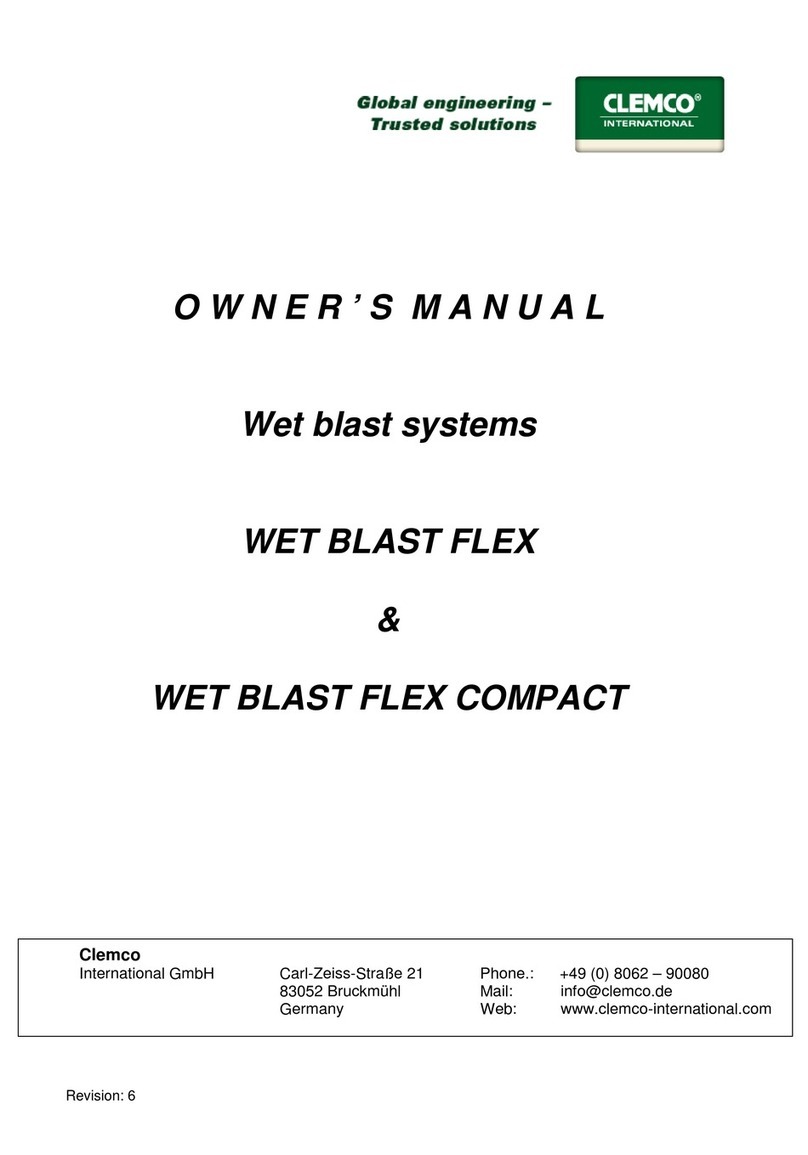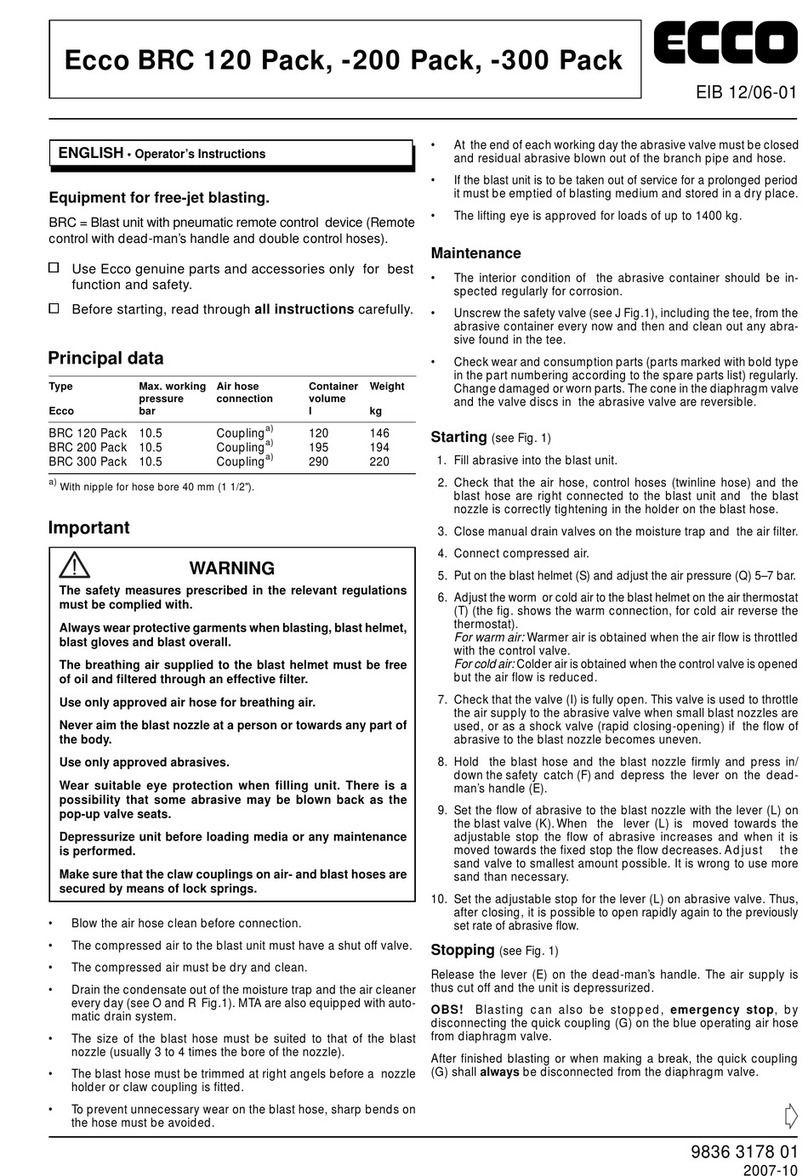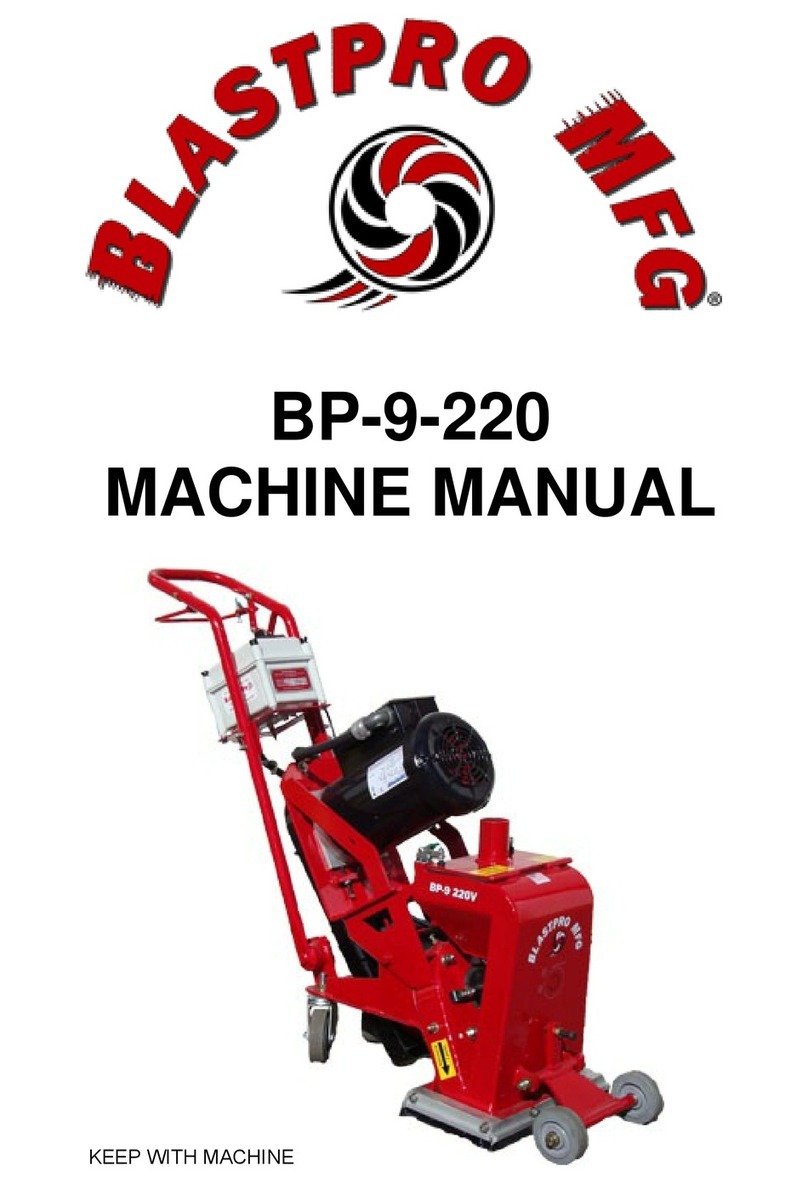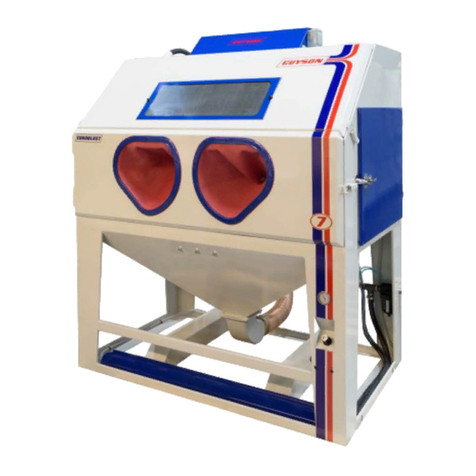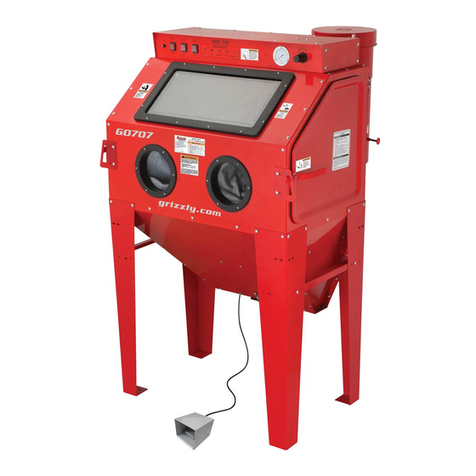AIRBLAST 1070 PNE User manual

OPERATOR’S MANUAL
AIRBLAST 1070 PNE
VACUUM BLASTING MACHINE

NOTICE
This user’s manual describes how to handle and operate the subject machine(s) to ensure
safe operation, optimum work economy and long service life.
Read this book before putting the machine into operation to ensure correct handling,
operation and proper maintenance from the beginning.
Keep this book available for the operator(s) and make sure that the unit is operated and
maintained according to the instructions.
In all correspondence always mention the unit type and the complete serial number shown on
the data plate.
The owner is responsible to keep the machine(s) in a safe operating condition.
If any statement in this book especially with regard to safety does not comply with local
legislation, the stricter of the two shall apply.
The author disclaims any responsibility from the use or misuse of information contained in
this publication.
Copyright 2012
By AIRBLAST BV
All rights reserved
This Handbook or any parts thereof may not be reproduced in any form without the written
consent of the copyright owners.

USER MANUAL VACUUM BLASTING MACHINE 1070 PNE AB
Revision 1 January 2012 page 0.0
Table of contents page
1. Introduction 1.1
2. Responsibilities of owner and personnel 2.1
3. Safety 3.1
3.1 Safety precautions 3.1
3.2 Safety provisions 3.4
3.3 Warning/ caution Information 3.5
4. Technical data 4.1
5. Parts list 5.1
6. Transport 6.1
7. Machine function 7.1
8. Setting up for operation 8.1
8.1 Installation instructions 8.1
8.2 Operation instructions 8.2
8.3 Adjustment 8.2
8.3.1 Setting the pressure 8.2
8.3.2 Adjustment of the abrasive control valve 8.3
9. Operation of the machine 9.1
9.1 Inspection procedure before starting up 9.1
9.2 Operation instructions 9.1
9.3 Taking the machine out of operation 9.3
10. Maintenance 10.1
11. Trouble shooting 11.1
12. Parts 12.1
13. Pneumatic diagram 13.1

USER MANUAL VACUUM BLASTING MACHINE 1070 PNE AIRBLAST
Revision 1 January 2012 page 1.1
1. Introduction
The AIRBLAST's Vacuum Blasting technology is a new concept for cleaning many types of
surfaces quickly, thoroughly and without environmental pollution.
The AIRBLAST 1070 PNE machine is designed as a high capacity direct pressure-blasting
machine featuring a continuous blast media feed system. This feature allows the machine to
be kept compact and lightweight but with a minimum down time for media loading and
machine handling.
During the blast operations, the dust and debris are separated from the re-usable abrasive
for simple disposal. Only the cleaned blast media recycles to provide optimal surface prepa-
ration.

USER MANUAL VACUUM BLASTING MACHINE 1070 PNE
AIRBLAST
Revision 1 January 2012 page 2.1
2. Responsibilities of owner and personnel
* Do not operate the machine before reading this manual.
* Good co-operation and co-ordination is necessary, when more than one operator is
required.
* Do not alter or modify the machine without a written permission of the manufacturer.
* Inspection and maintenance must be done as described in this manual.
* A competent and responsible operator is essential to an efficient use of the machine.
* Local labour and safety laws and regulations must always be observed.
* The technical personnel should be familiar with all recurrent situations, during assembly,
disassembly and maintenance of the machine.
* The operator should be familiar with all recurrent situations while operating the machine.
* If operator or technicians observe faulty or dangerous equipment or practices, they must
inform the owner or other responsible person immediately.
* The safety aspects should be known. Using the machine safely comes first.
* The working place should be free of obstacles.
* Improper use of the machine is not allowed.

USER MANUAL VACUUM BLASTING MACHINE 1070 PNE AIRBLAST
Revision 1 January 2012 page 3.1
3. Safety
3.1 Safety precautions
The following are general safety precautions for use before and during operation of the
AIRBLAST 1070 PNE. These precautions should be understood and followed to prevent
accidents, bodily injury, or damage to the equipment. Personal safety equipment used should
be of an approved type.
Safety precautions:
* Wear safety goggles, gloves, and hearing protection at all times during blasting.
* Despite the very high level of containment, suitable respirators must be worn when
removing hazardous or toxic coatings.
* Before each use carefully check the equipment for damaged loose or frayed cables, hoses,
or components. Rectify any problems before use.

USER MANUAL VACUUM BLASTING MACHINE 1070 PNE
AIRBLAST
Revision 1 January 2012 page 3.2
* All hose connections with claw couplings should be provided with safety clips.
* Do not use worn brushes as these will allow blast media and dust to escape into the
atmosphere. Check the brushes for service ability.
* Place the blast gun brush flat against the surface to be treated before pulling the trigger.
Release the trigger and wait a few seconds for abrasive flow to stop before lifting the blast
gun from the surface.
* Do not attempt to use this equipment without proper lighting and visibility.
* When opening and cleaning the dust compartment, or otherwise performing any work on
the equipment where dust is generated, always wear eye protection and a proper
respirator. Technicians should do this only.

USER MANUAL VACUUM BLASTING MACHINE 1070 PNE AIRBLAST
Revision 1 January 2012 page 3.3
* Do not operate this or similar equipment in an area where explosive gasses are present.
* Never aim the blast head at any part of the human body.
* Do not remove the safety guards from the machine.

USER MANUAL VACUUM BLASTING MACHINE 1070 PNE AIRBLAST
Revision 1 January 2012 page 3.4
3.2 Safety provisions
The machine is provided with the following safety provisions:
* Pressure relief valve (91)
* Spring clips (78) for the claw couplings (87)
* Swivel castor with brake (52)

USER MANUAL VACUUM BLASTING MACHINE 1070 PNE AIRBLAST
Revision 1 January 2012 page 3.5
3.3 Warning/caution information
DO NOT PERFORM BLASTING DURING RAIN OR VERY HUMID
CIRCUMSTANCES
COIL CABLES'S AND HOSES CAREFULLY WHEN EVER THE MACHINE
IS STORED
UNCOIL ALL AIR HOSES PROPERLY WHEN ATTACHED TO THE
MACHINE AND PLACE SAFETY CLIPS TO ALL COUPLINGS BEFORE
APPLYING PRESSURE TO THE HOSES INSPECT REGULARLY NOZZLE,
HOSES AND BRUSHES ETC. FOR WEAR.
TAKE IN ACCOUNT THAT THE NOZZLE WEARS OUT.
- THE NEEDED AMOUNT OF AIR INCREASES
- THE WEAR ON OTHER PARTS OF THE BLASTHEAD INCREASES
REPLACE NOZZLE WHEN WORN OUT LARGER THAN .2900"/7,4 M/M
NEVER AIM THE BLAST HEAD AT ANY PART OF THE HUMAN BODY
Table of contents
